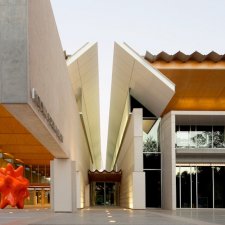- About us
- Support the Gallery
- Venue hire
- Publications
- Research library
- Organisation chart
- Employment
- Contact us
- Make a booking
- Onsite programs
- Online programs
- School visit information
- Learning resources
- Little Darlings
- Professional learning
John Thomas Lang (1876–1975) served two terms as premier of New South Wales in the 1920s and 1930s. Born in Sydney, Lang had worked as a paperboy, driver, and clerk before going into business as a real estate agent. He first went into politics when elected to Auburn Council in 1907 and was mayor of the municipality from 1909 to 1911. In 1913, he was elected to state parliament; in 1920, he became treasurer; and in 1923 he was elected Labor Party leader. He became premier in June 1925 and in his first term in this job introduced a widows’ pension, child endowment and a Workers Compensation Act. Lang was re-elected premier in 1930 on a platform that included public works and the restoration of pre-Depression wages. The following year he introduced the ‘Lang Plan’, whereby he proposed to avoid making cuts in government spending by refusing to pay the interest owing on British loans. This strategy divided the party and ultimately led to the dismissal of Lang and his government in May 1932. Despite his loathing of communism, Lang’s working-class background earned him the enmity of conservatives; and it was a member of the right-wing New Guard that famously beat Lang to ribbon at the opening of the Sydney Harbour Bridge.
Collection: National Portrait Gallery
Purchased 2008



On one level The Companion talks about the most famous and frontline Australians, but on another it tells us about ourselves.



Visit us, learn with us, support us or work with us! Here’s a range of information about planning your visit, our history and more!



We depend on your support to keep creating our programs, exhibitions, publications and building the amazing portrait collection!